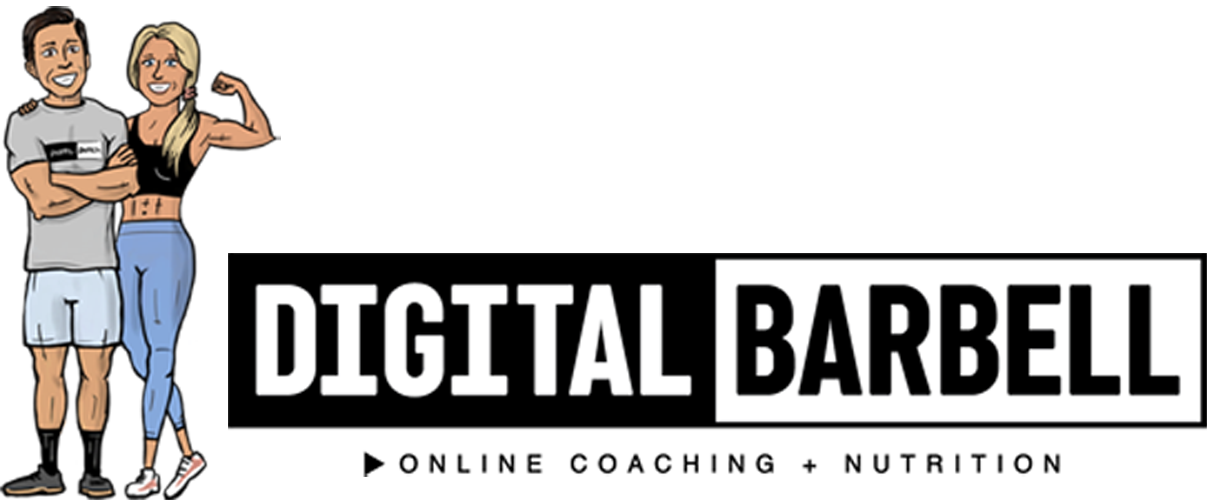No Nonsense Nutrition: The Basics Of Nutrition That Get Results
Nutrition fads and trends come and go.
But beneath the noise, are the tried and true basics that are responsible for 90% of your results.
This article is full of the basics that we use with our 1-on-1 Nutrition Clients to help them reach their goals.
Whether you’re trying to lose fat, build muscle, or just live a long, healthy life, you’ve found what you need.
If you want a partner in your fitness journey, we can help.
Let’s dig in.
Calories & Energy Balance
All food contains calories that our bodies use for energy.
When we eat at our TDEE calories (the number of calories we require to maintain our weight) we are in balance, and our average body weight remains unchanged.
CALORIES EATEN = CALORIES USED = NO CHANGE IN WEIGHT
When we eat more calories than our TDEE, we are in a "Caloric Surplus".
Our body uses those extra calories to build new tissue (muscle) and increase our fat stores (reserve energy). This surplus of calories increases our body weight.
CALORIES EATEN > CALORIES USED = INCREASE IN WEIGHT
When we eat less calories than our TDEE we are in a "Caloric Deficit".
Our body makes up the difference in energy that we need by tapping into our stored energy (mostly fat). This deficit of calories decreases our body weight.
CALORIES EATEN < CALORIES USED = DECREASE IN WEIGHT
Metabolism & TDEE
Our bodies convert the food (calories) that we eat into energy currency called ATP.
Our bodies spend that energy on everything we do from sleeping, to training, and everything in-between.
This energy conversion is called our Metabolism.
Points to note:
The number of calories that our body requires to exist at its current weight and activity level is called our Total Daily Energy Expenditure (or TDEE).
Everyone’s TDEE is different based on their height, weight, muscle mass, body fat, and activity.
Your TDEE is an adaptable number that changes gradually as those factors we listed change.
TDEE = Total Daily Energy Expenditure
This is the number of calories that our body requires to exist at its current weight and activity level.
Everyone’s TDEE is different based on their height, weight, muscle mass, body fat & activity.
YOU ADAPT!
Your TDEE is an adaptable number that changes gradually as those factors change.
Macronutrients
All food contains calories.
All calories in food can be put into 3 macronutrient categories (except alcohol). Different foods have different amounts of each macronutrient. You can see how many grams of each macronutrient are in foods by looking at the Nutrtion Facts label on them. Each of the 3 macronutrients has a different number of calories per gram. This is why different foods have different amounts of calories per serving.
PROTEIN: 4 Calories Per Gram
CARBOHYDRATES: 4 Calories Per Gram
FAT: 9 Calories Per Gram
Protein
This one is important!
The protein in the food that we eat contains the amino acids that are the building blocks for muscle in our bodies.
Protein intake is vital for muscle growth, maintenance, and recovery.
Animal sources of protein are preferred as our main source of protein because they contain the correct amino acids needed to stimulate muscle growth and repair.
Obtaining the majority of your protein from animal sources will optimize your results.
Building muscle is possible without eating meat and dairy, but it can be difficult without eating excess calories.
Read more about getting enough protein without eating meat in THIS blog.
Carbohydrates
Almost as important as protein!
Always a topic of discussion, carbohydrates are converted to glucose (sugar) in our bodies and are then burned for energy.
Excess carbohydrates are typically stored as reserve energy in our muscles and liver as glycogen.
That reserve energy is then used for hard efforts like weight lifting.
Eating carbohydrates does not inherently cause weight gain.
However, if excess carbohydrates contribute to a caloric surplus they can also be stored as body fat.
Focusing your carbohydrate sources on minimally processed foods is a great way to keep the overall calories in check.
Fat
Dietary fat aids our cells in absorbing vitamins and minerals, helps maintain hormone production and regulation, and it helps keep our hair, skin, and nails healthy.
Fat is not as useful as carbohydrates or protein when it comes to performance and recovery, so we adjust it accordingly.
Avoid getting more than 10% of your daily calories from saturated fat to minimize extra risk of cardiovascular disease and high cholesterol.
Fiber
Fiber is found in carbohydrate sources like GREENS, BEANS, BERRIES, OATS, etc.
Fiber aids in digestion, and elimination along with a host of other beneficial processes that keep us healthy.
Real Food
Regardless of your goals, we recommend eating mostly real, unprocessed, whole foods that come from an animal or from the earth.
This is the way that you can maintain the best body composition, eat the most food for the least amount of calories, and get the micronutrients that are prevalent in fruits and vegetables.
Restaurants
Beware when eating at restaurants.
Assume that the caloric content of the meals is 20 to 25% higher than whatever they are listed at.
It’s difficult to eat adequate protein when eating out at restaurants, and it’s easy to overeat fat, carbs, and calories.
Restaurants add copious amounts of oil and butter to many dishes to enhance their flavor. At 9 calories per gram, those calories can add up quickly and contribute to weight gain.
Eat at restaurants sparingly, and learn to cook meat and vegetables at home.
You’ll save a lot of $$ this way also.
You are armed with the information now.
Our specialty is helping people apply these basic principles to their lives in a way that never feels like a diet.
We can help you too. Apply for coaching below.
-Jonathan & Blakley













